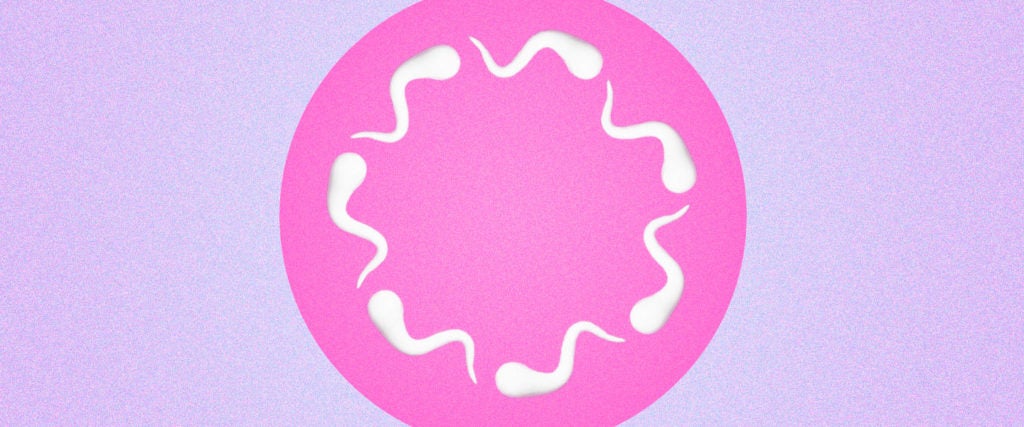2020 was a landmark year for sperm-related research, for some reason. We learned that sperm doesn’t swim like a fish, but instead spirals like an otter; sperm doesn’t race to the egg, it’s chosen; the most developed sperm doesn’t make it to the egg, the slightly deformed ones do. Now, the sperm-science renaissance continues into 2021, with the discovery that sperm sometimes literally “swims” in circles rather than making its way to the egg.
Again, it’s more of a spiral than a swim, but still. According to a study published by German research organization Max-Planck-Gesellschaft, flaws in the cytoskeleton of the sperm cell may impact the movement of the sperm’s tail. In order for the sperm to move in the direction of the egg, its tail must follow a specific rhythm. When the sperm is unable to do that, it will basically just move in a circle, like rowing a boat with only one oar. Because this problem can impact all of the sperm cells an individual creates, it could be the cause of some cases of infertility.
The good news is that the researchers further discovered the precise causes of this issue. The bad news is that it has to do with the very DNA that determines how sperm cells are created. As a press release for the study explains, our bodies contain what is essentially a library of DNA blueprints that our cells use to construct various bodily proteins. In order for these proteins to fulfill certain functions, they’re often modified by other enzymes. The creation of the sperm tail is one such example of a protein that’s been modified. This process, called glycylation, is likely responsible for the production of successful, straight-moving sperm. Conversely, sperm cells that haven’t properly undergone glycylation will only move in circles.
It’s possible, though, that this will one day be fixable. It could also lead to further developments in other areas of health, as the tail structure of sperm is similar to other aspects of the body, such as the cilia of the respiratory system.
It’s unclear exactly how this relates to other sperm research, such as that about sperm spinning rather than swimming, or how sperm with seemingly less-developed tails move with greater agility. Perhaps the glycylation process plays a role in these two processes, as well. What seems clear, though, is that we basically need a whole new framework for discussing sperm function. Explaining how sperm “swims” when it doesn’t really swim is getting way too confusing.

